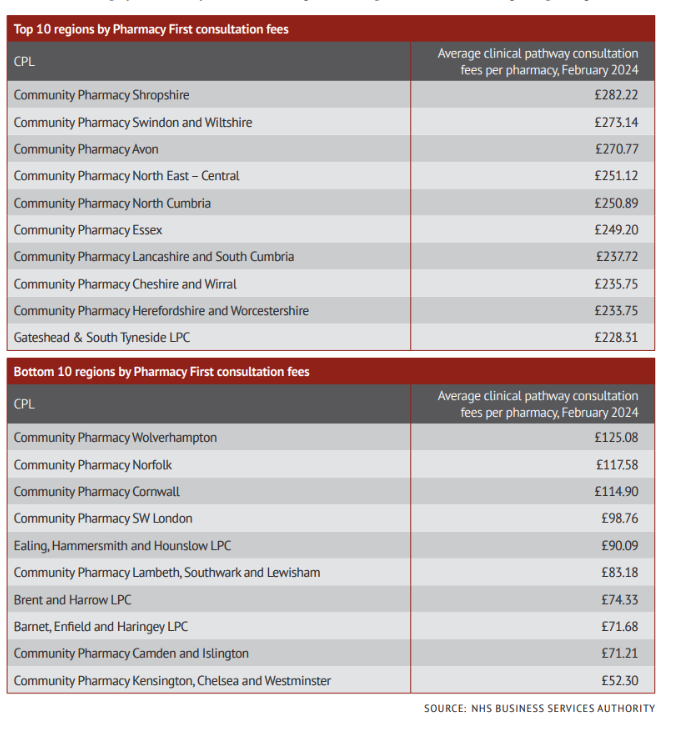What does the Pharmacy First ‘postcode lottery’ look like?
In News
Follow this topic
Bookmark
Record learning outcomes
Pharmacy First is a beast of a service, incorporating brand new and previously existing workstreams under one roof. Bringing pharmacies up to speed on the machinations of the service in time for its launch was a huge ask of the sector, yet it has risen to the occasion impressively with an initial sign-up rate of over 95 per cent.
It’s proving challenging to get a sense of just what the service means for the average pharmacy’s bottom line, and what role geography plays in that.
Last month, we looked at the highest performing pharmacies in the service as a whole and found that the upper end of the league table was skewed towards businesses recording frankly incredible numbers of minor illness consultations, presumably building on strong local referral links developed through the now decommissioned Community Pharmacist Consultation Service.
Several were in London, and some recorded negligible numbers of the clinical pathway consultations that distinguish the service from its predecessors.

Particular concerns have been raised about more rural and remote areas, where anecdotally GPs tend to be seen as more difficult to engage. But if we look at how England’s 56 CPL regions are faring in terms of clinical pathway fees, we find that the seven worst performing are all in the capital.
In the bottom ranking region of Kensington, Chelsea and Westminster (KCW), we find Marylebone-based Meacher Higgins & Thomas, the top ranking pharmacy in the whole of England for Pharmacy First.
But for the average pharmacy in that CPL region, pathway fees were worth just £52.30 in the month of February, according to an analysis by PharmData.
Meanwhile, in Community Pharmacy Shropshire, which sits in the borders of a highly rural county, the average pharmacy took in more than five times that amount, making them the most successful in the country.
While sparsely populated Cornwall and Norfolk do feature in the bottom 10, there are several other rural counties among the highest performing regions – suggesting that the degree of remoteness in an area may not be the main factor driving GP referrals.
The key here may be deprivation. While Shropshire and KCW are among the most affluent parts of the country, the latter is also home to pockets of significant deprivation and a child poverty rate of 31 per cent.
The picture is different in Shropshire, where according to local government, deprivation is generally confined to a few areas in market towns and some rural areas.
Getting a grip on what is behind the disparities in Pharmacy First figures will be vital for the sector.
Amid concerns that on current trends, pharmacies may not use up the full £645 million pledged by the previous government over a two-year period, there is an urgent need to close these gaps and stop more pharmacies going out of business, further impacting their patients.

